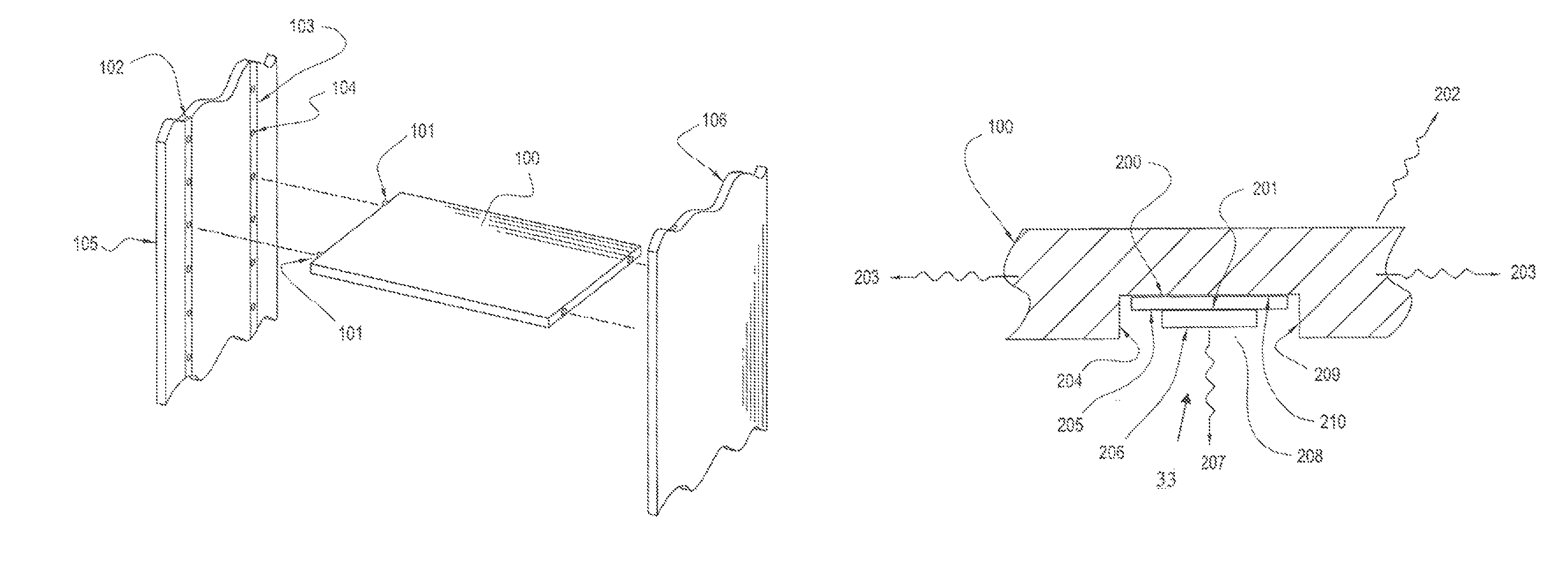Sustainably constructed heat dissipating integrated lighting surface
a technology of integrated lighting and heat dissipation panel, which is applied in the direction of lighting support devices, furniture parts, synthetic resin layered products, etc., can solve the problems of easy failure of external wiring, reduce the burden on limited natural resources, reduce the carbon footprint of products, and reduce the effect of voc emissions
- Summary
- Abstract
- Description
- Claims
- Application Information
AI Technical Summary
Benefits of technology
Problems solved by technology
Method used
Image
Examples
Embodiment Construction
[0031]Although the following detailed description contains many specifics for the purposes of illustration, anyone of ordinary skill in the art will appreciate that many variations and alterations to the following details are within the scope of the invention. Accordingly, the following preferred embodiments of the invention are set forth without any loss of generality to, and without imposing limitations upon, the claimed invention. First, the construction details of the heat dissipating panel itself are described, followed by a detailed description of the lighted heat dissipating panel apparatus.
a. Heat Dissipating Panel
[0032]The heat dissipating panel may be comprised of a structural core in combination with a filler material. The structural core may take a variety of shapes and may be fabricated from a number of different materials as described below and functional equivalents thereof. The filler may be a number of materials as described below, such as glass-carbon material, and...
PUM
| Property | Measurement | Unit |
|---|---|---|
| temperature | aaaaa | aaaaa |
| temperatures | aaaaa | aaaaa |
| transparent | aaaaa | aaaaa |
Abstract
Description
Claims
Application Information
 Login to View More
Login to View More - R&D
- Intellectual Property
- Life Sciences
- Materials
- Tech Scout
- Unparalleled Data Quality
- Higher Quality Content
- 60% Fewer Hallucinations
Browse by: Latest US Patents, China's latest patents, Technical Efficacy Thesaurus, Application Domain, Technology Topic, Popular Technical Reports.
© 2025 PatSnap. All rights reserved.Legal|Privacy policy|Modern Slavery Act Transparency Statement|Sitemap|About US| Contact US: help@patsnap.com



